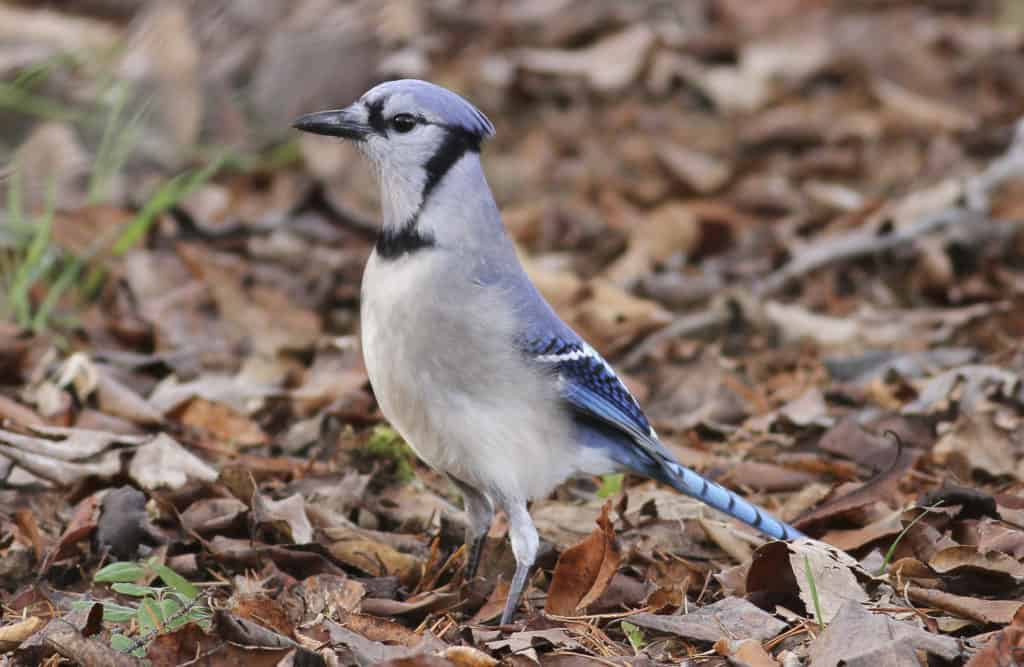Creature Feature

A Different Kind of Blue Bird
By Wayne Bierbaum
When I was growing up in Florida, around 7 years old, a storm knocked a bird’s nest out of a tree. One upset baby blue jay was in the nest.
There were no small-bird rescue groups at that time but I was given instructions on how to feed and care for the bird. There was a mash recipe that the bird loved. I named it “Jack” because its plea for food sounded like that name. Eventually, it was released outside but would come back and visit for some treats and a little conversation.
Blue jays are some of the smartest birds. They are able to solve three-step puzzles and use simple tools. They have complex vocalizations and will even imitate the voice of a hawk to scare off other birds and intruders. Other vocalizations are used to communicate with each other. Jays can be as large as a small hawk and have a head crest which they can raise and lower like an emotional flag. The flag goes up when they are angry or upset.
They have a complex social structure and do a lot of talking to each other. They usually move in groups and use loud mobbing in the presence of their enemies. Following their mob calls has led me to black rat snakes, owls, hawks and fox. They are omnivores, eating anything from acorns to raiding other bird’s nest for eggs and young birds.
Blue jays are found east of the Rockies, ranging from Florida into Canada. There are other species of jays across North America, scrub, pinion, Stellar’s, gray—they all seem to be loud and smart. The blue jay is the only one that migrates, but it is only a partial migration. The northern blue jays, where there are heavy snows, will migrate south but their destinations are not well-documented. Most, but not all, of Maryland’s local jays are likely to stay put. It does seem that some of the northern birds seem to displace the more southern birds.
I do like their coloration and their smarts but they show up at my feeders as a group and tend to be too loud.
Attracting these birds to your feeders is fairly easy: they love peanuts. The nuts need to be unsalted but can be cooked or uncooked. Striped sunflower seeds and suet will also attract them. In my yard, I only occasionally put out peanuts but the jays seem to prefer them in the shell. It seems like they enjoy the challenge of opening them. Some people have even been able to feed them out of their hand.
